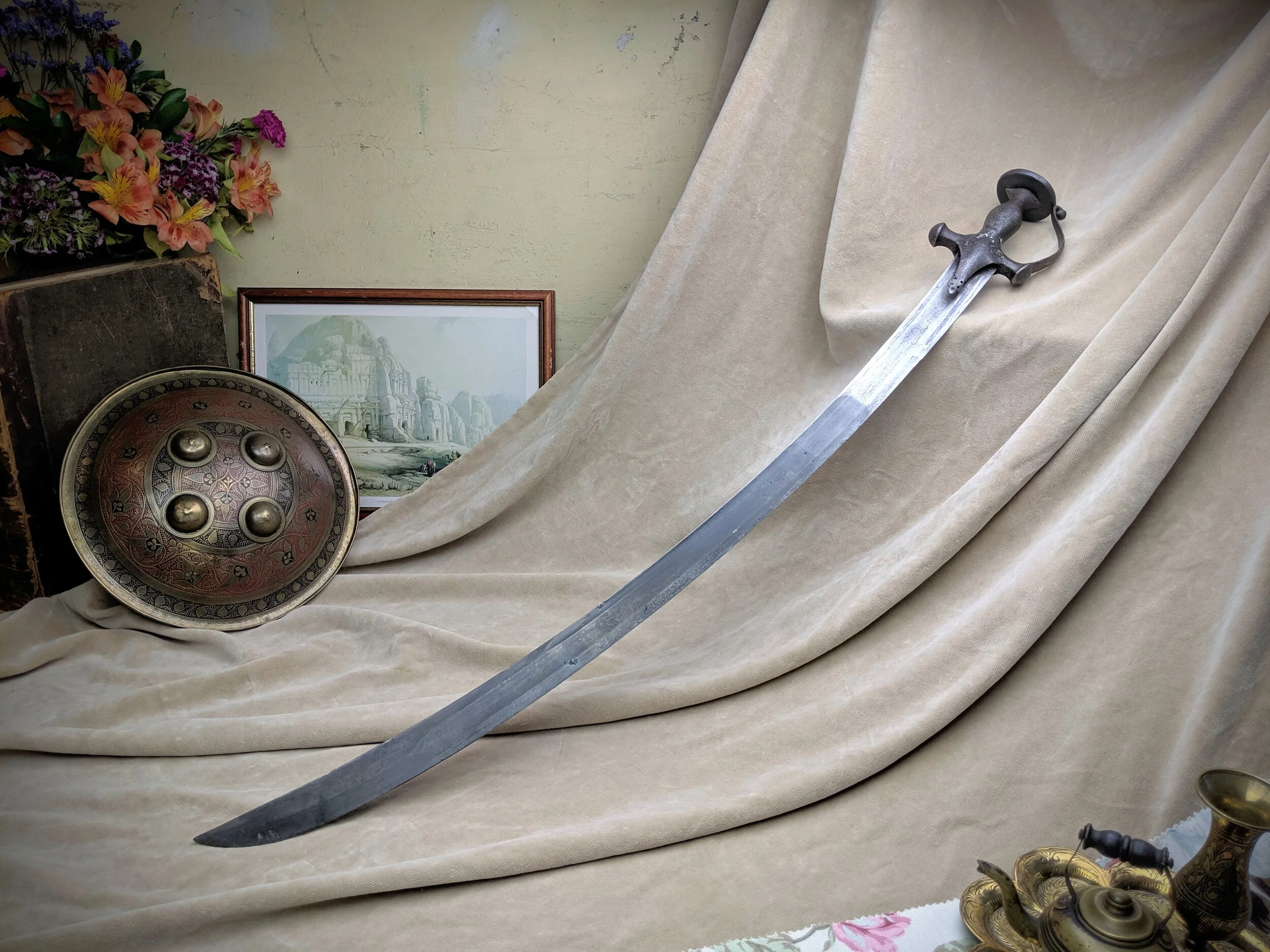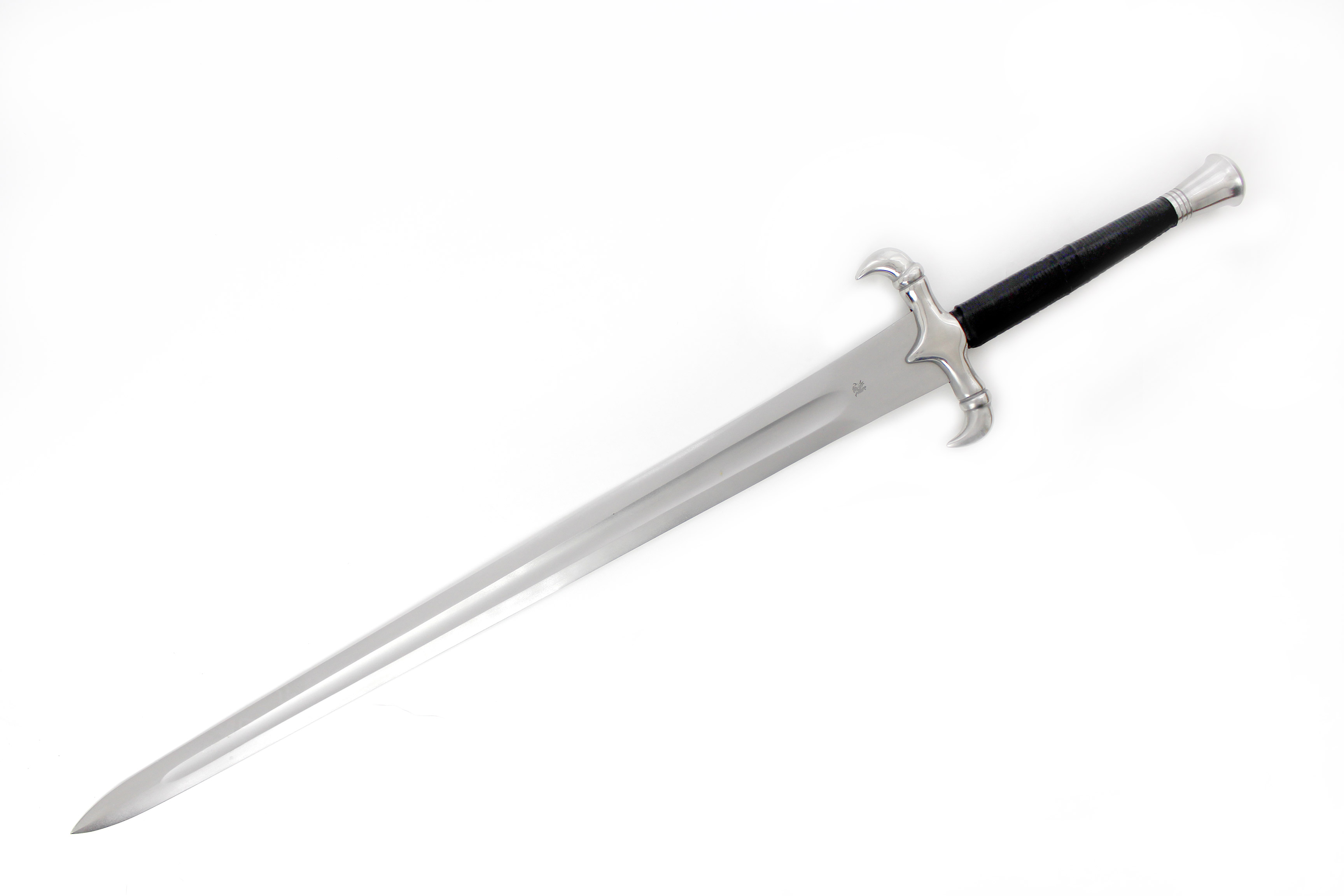Definition and Etymology

Sword definition – A sword is a cutting or thrusting weapon with a long, straight blade and a handle. Swords have been used throughout history for both warfare and self-defense.
In the annals of human history, the sword has been an enduring symbol of power, status, and violence. Its gleaming blade, honed to razor-sharpness, has carved a bloody path through countless conflicts, from the ancient battlefields to the modern-day streets.
Whether wielded by a noble knight or a common foot soldier, the sword has been a defining tool in shaping the course of human events. As we delve into the multifaceted world of swordsmanship, let us explore the intricacies of sword definition , a concept that encompasses both its physical form and its cultural significance.
Etymology
The word “sword” comes from the Old English word “sweord,” which is derived from the Proto-Germanic word “*swerdaz.” The Proto-Germanic word is thought to be derived from the Proto-Indo-European word “*swerdhos,” which means “to cut.”
Evolution of the Definition of “Sword”
The definition of “sword” has evolved over time. In the early days of swordsmanship, a sword was any weapon with a long, straight blade. However, as swords became more specialized, the definition of “sword” began to narrow. Today, a sword is typically defined as a weapon with a long, straight blade that is used for cutting or thrusting.
Types and Classifications
Swords, throughout history, have taken on various forms, each designed for a specific purpose and reflecting the cultural context in which it was created. From the iconic European longsword to the curved katana of Japan, swords have been crafted with meticulous care, showcasing the ingenuity and artistry of their makers.
Classifying swords can be a complex task, as there are numerous factors to consider, including design, construction, and intended use. However, a broad categorization can be made based on the following criteria:
Design and Construction
The design and construction of a sword can vary greatly depending on its intended purpose. Some swords, such as the longsword, were designed for use in close combat, while others, such as the rapier, were intended for thrusting attacks. The materials used in the construction of a sword also played a significant role in its effectiveness. Steel was the most common material used for sword blades, but other materials, such as bronze, iron, and even wood, were also employed.
Intended Use
The intended use of a sword also influenced its design and construction. Swords designed for warfare were typically longer and heavier than those intended for self-defense or ceremonial purposes. The shape of the blade could also vary depending on its intended use. For example, swords designed for cutting were often curved, while those designed for thrusting were typically straight.
Cultural Context
The cultural context in which a sword was created also played a significant role in its design and construction. In some cultures, swords were seen as symbols of power and prestige, while in others they were simply tools of war. The decoration of a sword could also reflect the cultural values of its owner. For example, swords from Japan were often decorated with intricate designs that reflected the samurai code of honor.
| Sword Type | Design | Construction | Intended Use |
|---|---|---|---|
| Longsword | Long, straight blade with a double-edged tip | Typically made of steel | Close combat |
| Rapier | Long, slender blade with a pointed tip | Typically made of steel | Thrusting attacks |
| Katana | Curved blade with a single-edged tip | Typically made of steel | Cutting attacks |
Cultural and Historical Significance: Sword Definition

Swords have held a profound cultural and historical significance across various societies throughout history. They have played a pivotal role in mythology, literature, and art, embodying power, courage, and status.
In Mythology and Literature, Sword definition
Swords have featured prominently in mythologies and epic tales. From the legendary Excalibur in Arthurian legend to the divine Kusanagi-no-Tsurugi in Japanese mythology, swords have been imbued with supernatural powers and associated with legendary heroes and deities.
In Art and Symbolism
Swords have been a recurring motif in art, symbolizing power, justice, and honor. From ancient Greek sculptures to medieval tapestries, swords have adorned the works of renowned artists, capturing their cultural and historical significance.
In Warfare and Politics
Swords have played a pivotal role in warfare, shaping the course of battles and the rise and fall of empires. From the bronze swords of ancient Egypt to the steel katanas of feudal Japan, swords have been the primary weapons of infantry and cavalry, influencing military strategies and determining the outcome of conflicts.
In Social Structures
Swords have also held significant social implications. In many cultures, sword ownership was restricted to the elite, serving as a symbol of power and authority. Swords were often passed down through generations, becoming heirlooms that embodied family lineage and prestige.
A sword, a weapon of war and power, has a meaning that transcends its physical form. It is a symbol of courage, honor, and strength. Its blade, sharp and deadly, represents the power of life and death. Its hilt, often adorned with intricate carvings, represents the wisdom and experience of its wielder.
Together, they form a potent combination that has been feared and respected throughout history. For more on the sword meaning , explore the depths of its symbolism and the stories it has witnessed.
A sword, with its sharp edge and pointed tip, is a weapon of war and a symbol of power. Yet, in the whimsical world of Winnie the Pooh , a sword takes on a different meaning. Pooh’s “Sword of Excalibah” is not a weapon of destruction, but a toy for adventure and imagination, a reminder that even the most ordinary objects can become extraordinary in the hands of a child.
A sword, a timeless symbol of power and conflict, has a blade that is typically straight and double-edged. The channel definition of a sword refers to the groove or depression running along the center of the blade, reducing its weight and increasing its strength.
This channel also allows blood to flow more freely, a gruesome yet fascinating aspect of the sword’s deadly purpose.
The sword, a weapon of war and symbol of power, has been wielded by warriors and kings throughout history. Yet, beneath its gleaming blade lies a hidden sweetness, akin to the cherry , a fruit that embodies both beauty and fragility.
Like the cherry’s delicate flesh, the sword’s sharpness can be both alluring and deadly, a reminder that even in the most violent of conflicts, there is often a tender undercurrent waiting to be discovered.